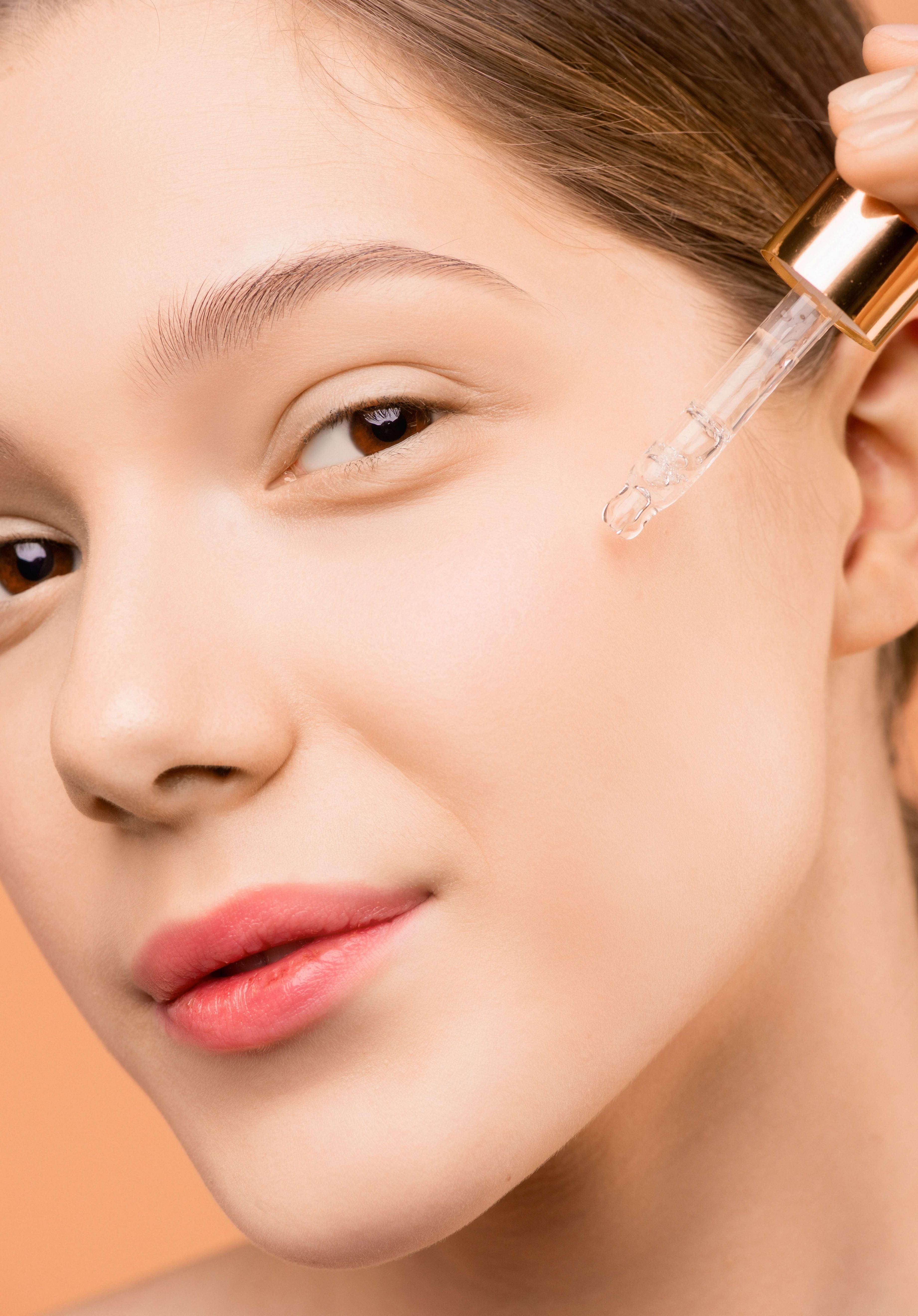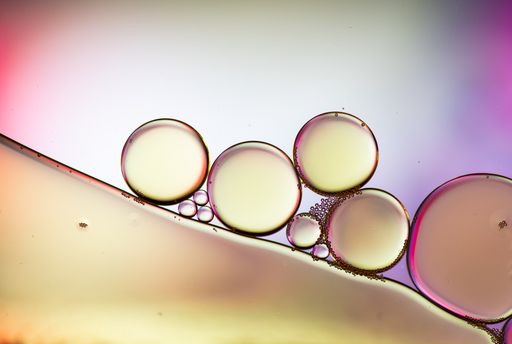You have no items in your shopping cart.

The problem with a lot of beauty and wellness products is that their labeling is so confusing. Sometimes the benefit of the product can be lost in translation because we see a certain word and automatically assume it won’t work for us. An example of this is facial oil. If you have oily or acne-prone skin, the thought of putting any oil on your skin sounds preposterous, so you would likely never consider using a facial oil. However, you might consider using a facial serum facial serum that contains oil, simply because the product name doesn’t scare you as much as facial “oil” does.
The funny thing about face oils and serums is that they are often extremely beneficial to all skin types, including oily skin, sensitive skin, and acne-prone skin. Don’t believe us? At KULCBD, we research our products (and other popular beauty products) to find out exactly what works and what is just pure hype. As such, we’ve done our homework on facial oils, and we know how to use a facial oil on every skin type and get the most benefit from the product as possible. If you’ve never considered using a facial oil, or think your skin prohibits you from using them, we’ve got all the information you need so you can make an informed decision about which facial oil to try and how to use them.
Facial oils and serums are essentially the same products. Facial oils provide skincare solutions in a highly concentrated solution that is typically applied to your face one to two times a day. As such, you can find a facial oil that has a specific skin remedy it allegedly treats; there are facial oils to treat practically any skin issue or concern you have. However, one of the biggest advantages of using a facial oil is its ability to regulate your skin’s natural oils and regulate and balance the level of moisture you have on your face. Combination skin beauties rejoice! Facial oil is basically your one-stop-shop for complete hydration care for your skin. Instead of using one product for your oily patches and another for your dry spot, facial oil can be used all over to assist your skin’s natural oil production and help it regulate moisture production. So how does it do that?.
Let’s have a little science lesson. One of the scientific properties of any oil is that it has the ability to dissolve other oils. This is how the popular oil cleansing method was developed. By using the property of oil to attract and dissolve other oils, you can theoretically apply oil to your face and expect it to lift and remove excess oil produced by your own skin. The same theory applies when using a facial oil. If you apply facial oil to your skin, it can attract other oils being overproduced and dissolve them, without stripping your skin of moisture or irritating it to the degree that some toners and other products might. Additionally, if you have dry skin, the facial oil typically won’t leave you dry since it only dissolves excess oil sitting on the surface of your skin that might be causing your skin to appear greasy or oily.
Facial oils are also used as a protective barrier for your skin against the outside environment. This means it can help protect you from environmental stressors that are trying to age your skin prematurely. As mentioned, facial oils can also be formulated to treat specific skin concerns like acne, fine lines, and wrinkles, overall texture and brightness, etc., but for our purposes, we’ll stick to looking at facial oils that provide all-around protection and promotion of health to your skin.
It’s just oil, guys. Facial oils have an array of ingredients designed to work congruently with one another to produce the best possible results for your skin. You need to be sure the ingredients contained in your facial oils are the best available and actually work to help your skin and not harm it. Some ingredients in less expensive oils can actually cause breakouts, skin irritations, and sometimes even allergic reactions, so it’s best to find ingredients that are all-natural and tested so that you can properly practice layering with your face oils.
Squalane. What is this weird ingredient and what does it do? Squalane is a substance similar to squalene, which is a moisturizing compound produced by our skin’s sebaceous glands. This substance can provide moisture to our skin and can also create a protective barrier on the surface of our skin to keep pollutants out. Using a product with squalane oil helps to assist your skin’s natural production of squalene and can regulate over and/or under production of this naturally occurring substance.
CBD oil. Cannabidiol, or “CBD”, oil is one of about 100 cannabinoids found in the hemp plant. CBD plant oil is an expert moisture balancer. When used topically, it has the potential to really help skin perform its ultimate moisture-balancing act. Working synergistically with other oils in a great facial serum, CBD oil helps to promote an all-over glow to your skin, and can assist with restoration of the youthful glow associated with healthy, younger skin.
Milk Thistle. This is a great ingredient to look for in a facial oil. Milk thistle helps to maintain the skin’s natural elasticity and can also act as a protective barrier against some environmental stressors.
Hemp seed oil. Another great oil to find in a facial oil blend, hemp seed oil has properties that are great for smoothing, calming, and promoting overall wellness on your skin. The most common result users find with hemp seed oil usage is a smoother, more even skin tone.
Lactobacillus ferment. This is simply a probiotic. If you can find a facial oil with a probiotic, you can count on that oil working to keep your skin healthy with good bacteria that can effectively reduce bad bacteria and keep the skin as fresh and well as possible.
Amygdalus (sweet almond) oil. This is an amazing oil that can help reduce the appearance of redness and dryness. Because it is full of emollients, it has the potential to improve the appearance of skin complexion and tone.
These are our favorite facial oil ingredients designed to benefit your skin from its deep cell layers to its surface, along with jojoba oil, rosehip oil, argan oil, tea tree oil, and coconut oil. However, to get the absolute most benefit from a facial oil, you need to know how to properly use a facial oil. There’s a right way and a wrong way to apply it, and it’s important to know how to use facial oil properly.
You may think you can just skip your moisturizer and apply facial oil instead. That’s not the case. Although a facial oil will help hydrate your skin, it is not a moisturizer and shouldn’t be treated as one. Facial oil is a specialized skin treatment product that should be used in connection with your other skincare products, not in lieu of them.
The best and most effective way to use a facial oil is in the morning and/or evening after your moisturizer. You’ll want to start with a clean face. Try using a great exfoliating cleanser to thoroughly cleanse and open your pores so the remaining product and facial oil have the ability to penetrate the surface of the skin.
You’ll want to be sure to use oil as the last step after your lotion; yes, after. This is because ingredients in your facial oil like squalane intentionally create a protective barrier on the surface of your skin, working to keep the good, beneficial properties of your facial oil and moisturizers in, and the harmful, environmental pollutants out. If you apply your facial oil prior to your moisturizer, there’s a good chance some of your moisturizer will not penetrate your skin. Not only will you miss out on receiving the full benefit from your moisturizer because it cannot penetrate your skin, but you could also cause it to sit on top of the skin, making the skin appear oily.
Only use a few drops of facial oil on your skin. A small, pea-sized amount should be enough to cover your entire face, and neck if you desire. Facial oil is spreadable and does not absorb as quickly as a moisturizer, so it’s okay to start with a little and add more if you need it. Always err on the side of less is more when applying facial oil. Gently smooth the oil over your skin in an upward and outward manner. You don’t need to apply pressure as the oil will penetrate the skin without a deep massage.
Wait until your facial oil is completely dry before applying any other products, like makeup. If you use products on your skin before the oil is dry, the product may clump into the oil, creating a less than desirable situation!

A great facial oil is essential to any thorough skincare routine. You can use facial oil no matter what type of skin you have oily, dry, and combination skin types can all benefit from the habitual use of facial oil. Facial oil should contain a blend of oils that have moisture-balancing and environmental stressor blocking properties. Facial oils should never contain harmful ingredients that could cause breakouts or allergic reactions. Using facial oil can improve the overall appearance and health of your skin, and healthy skin is happy skin!
Sources-